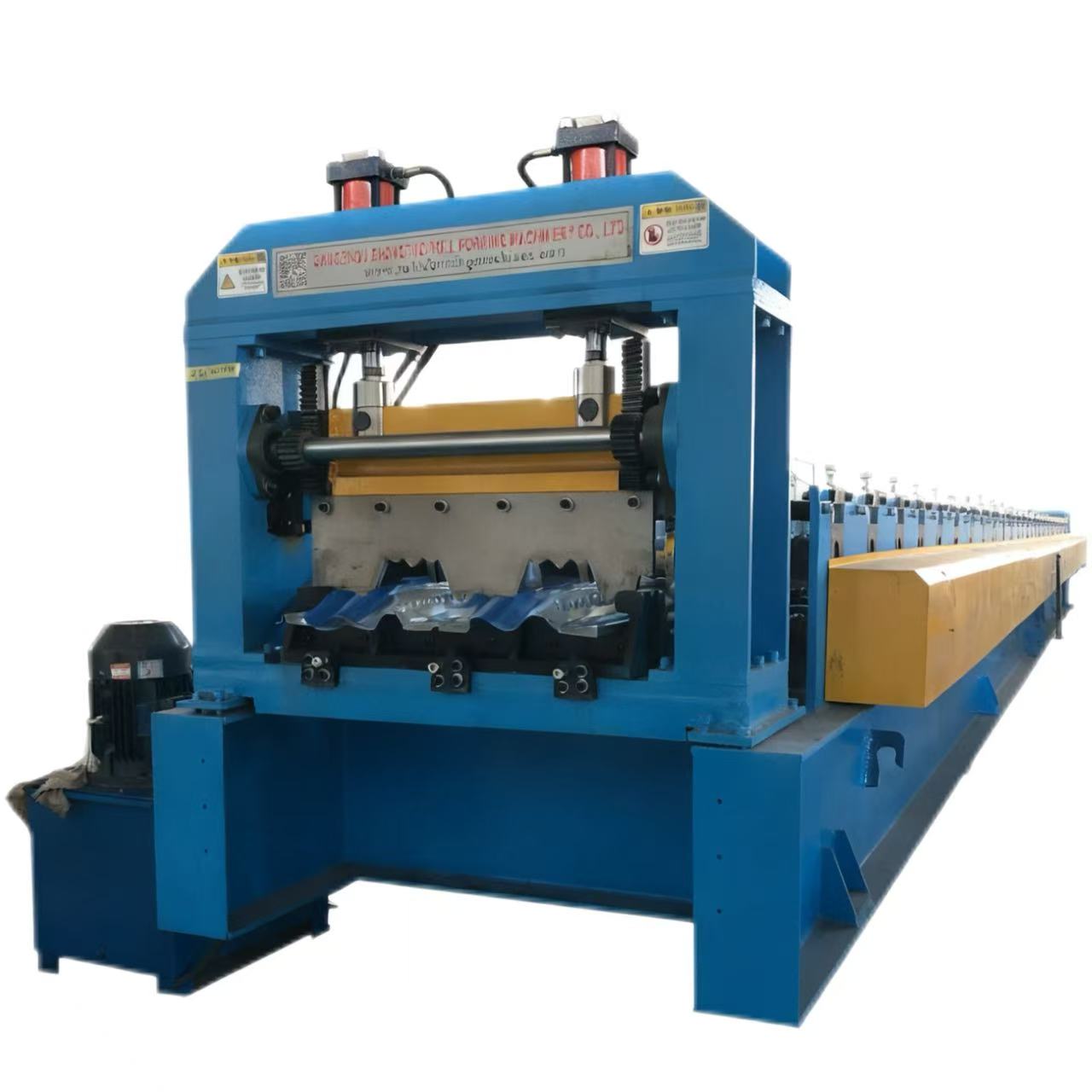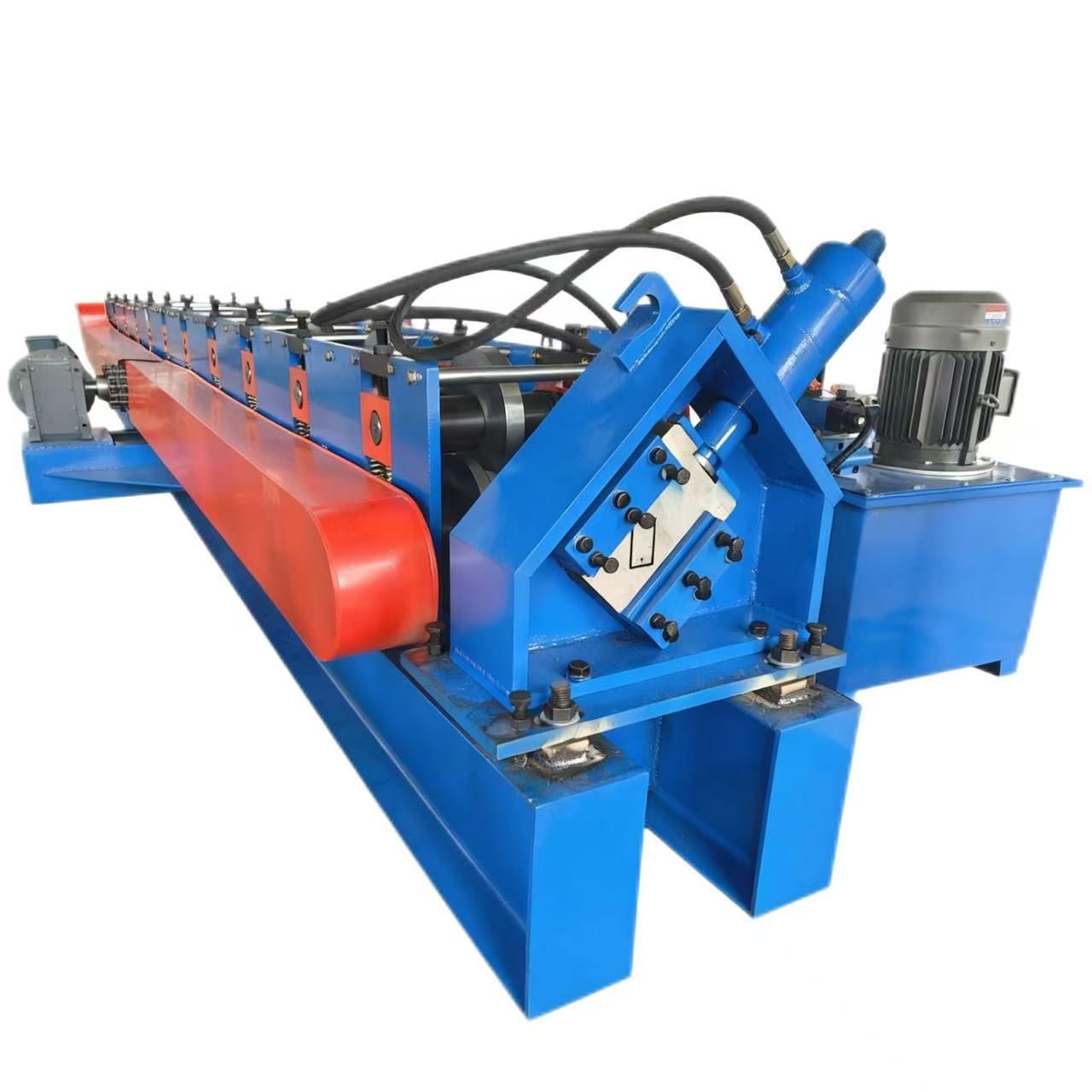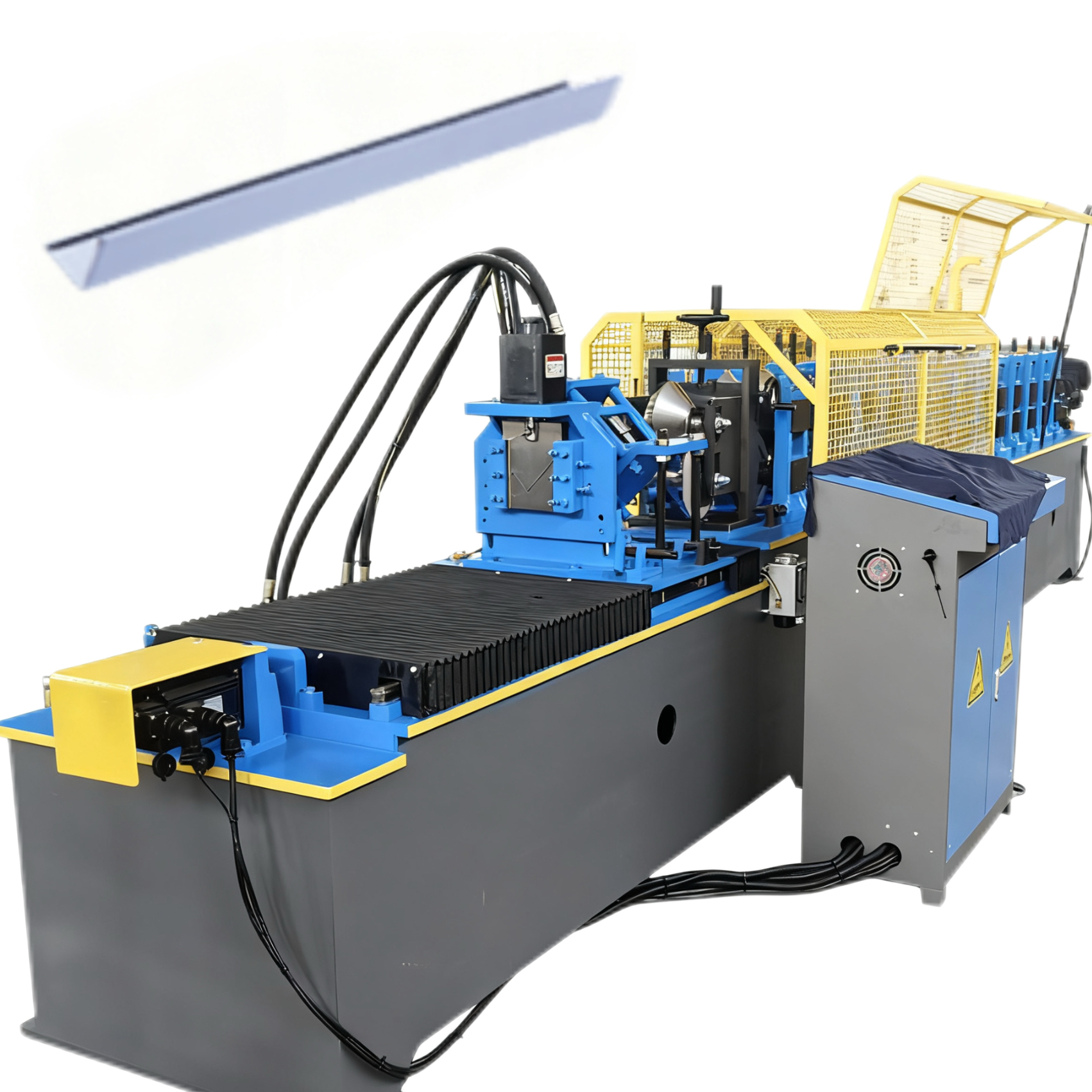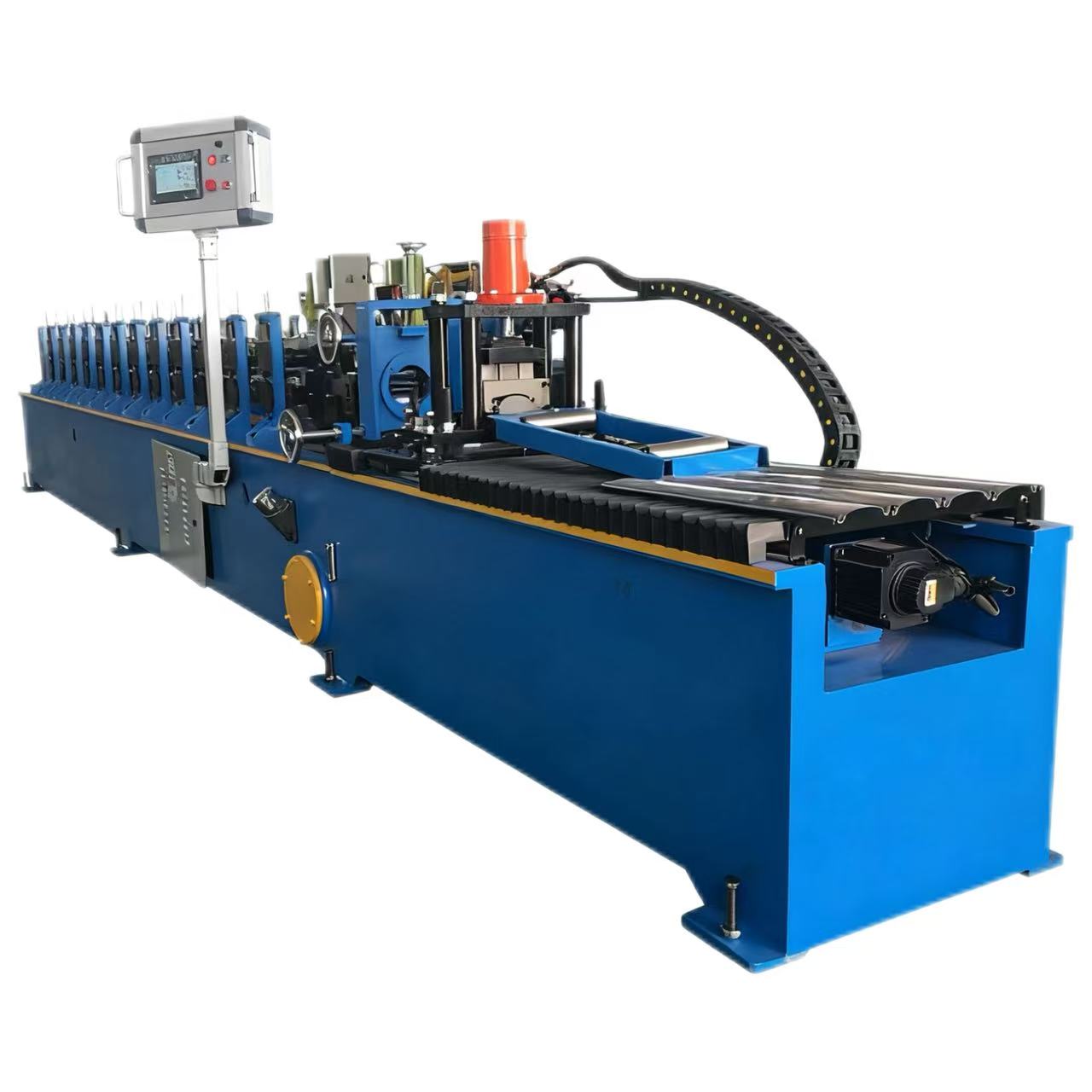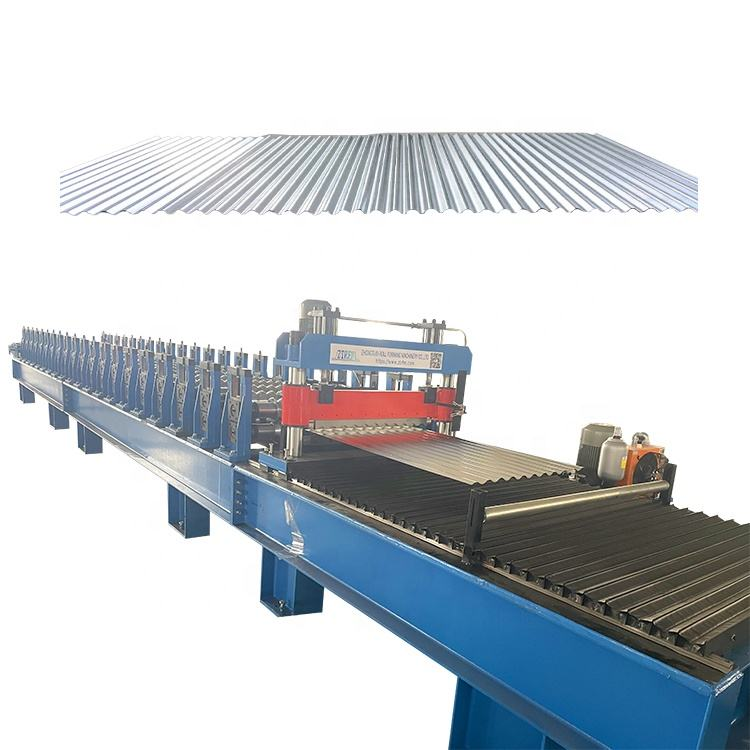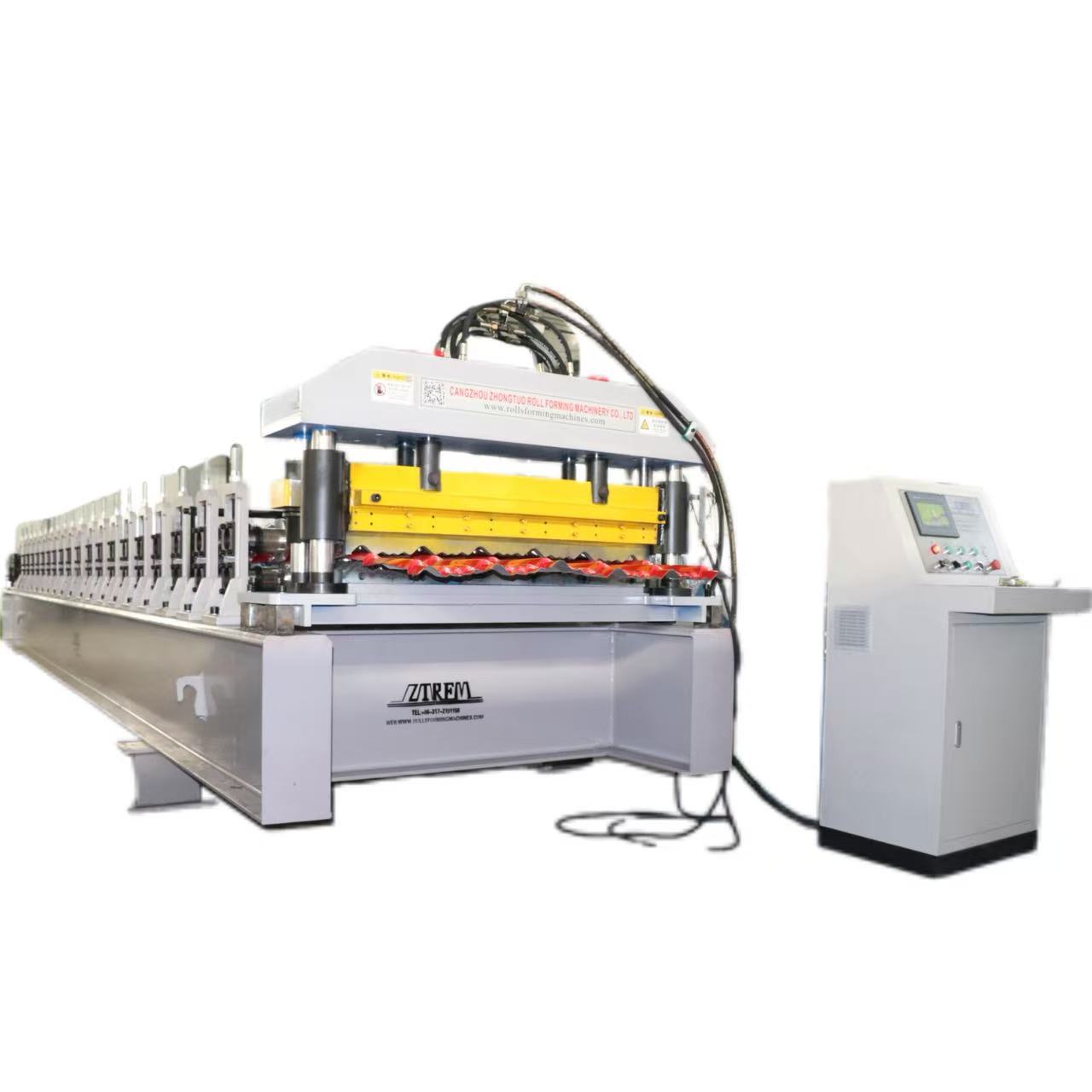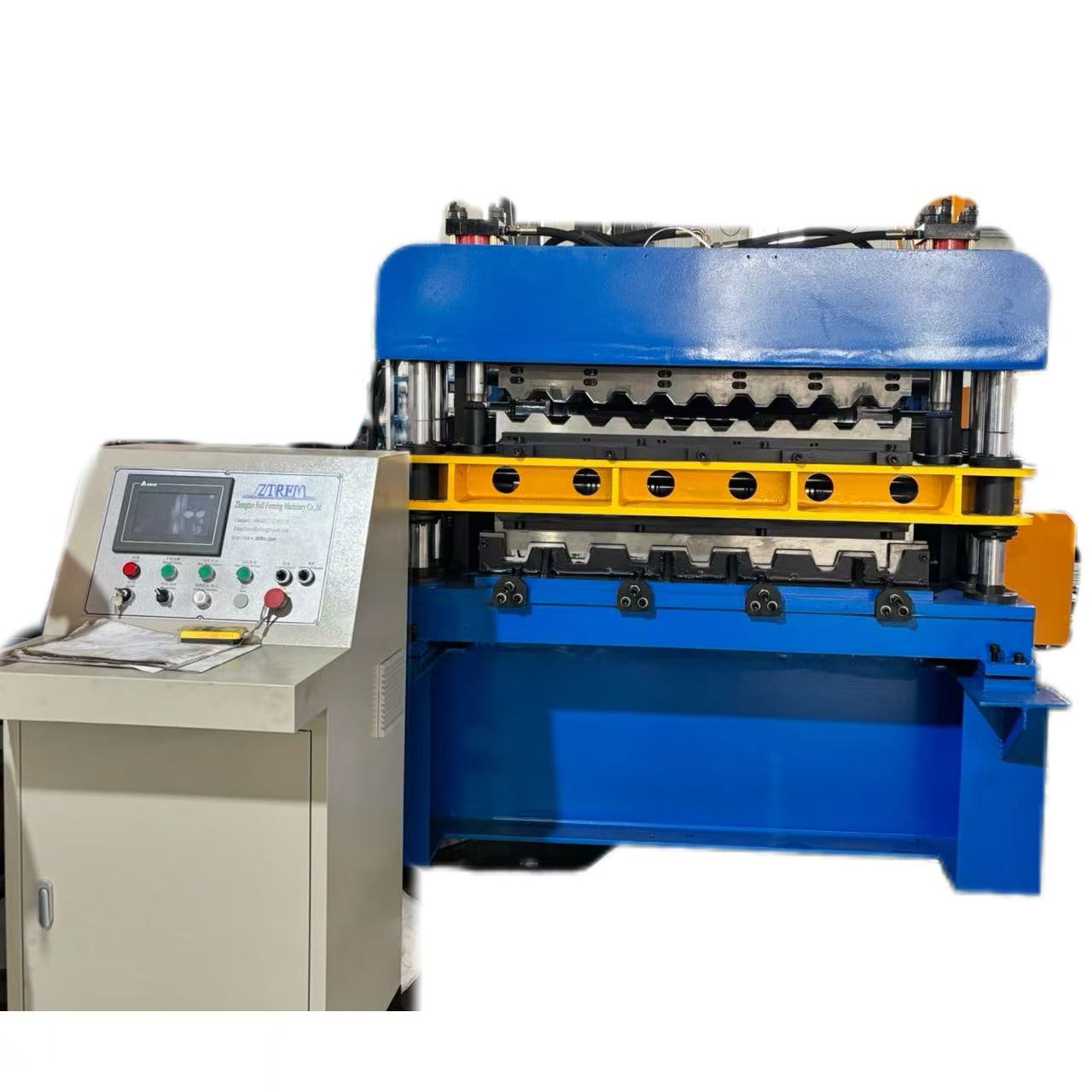The double-layer roof tile machine is a kind of color steel tile forming equipment that integrates two different types of tile pressing functions together, the color steel plate coil is placed on the feeding and import platform, with the start of the equipment, the raw materials enter the forming host under the action of traction, and under the rolling and bending of the upper and lower two layers of roll groups, they are respectively pressed into different types of tile shapes, and the formed tiles continue to move forward, when the set length is reached, the shearing device will cut off the tiles, and the finally cut off tiles are output from the discharge port of the equipment. Double-layer roof tile machines are widely used in industrial and civil buildings, warehouses, special buildings, roofs, walls and interior and exterior wall decoration of large-span steel structure houses. It can produce various types of metal roofing tiles, such as trapezoidal tiles, arc tiles, glazed tiles, etc., to meet the needs of different customers.

Product Attributes :
|
1.Formed Material
|
PPGI,GI,AI,GL
|
Thickness:0.3-0.8mm
Width:1220mm(As per profile drawing)
|
||
|
2.Decoiler
|
Hydraulic automatic decoiler
|
Manual decoiler(will give you as free)
|
||
|
3.Main body
|
Roller station
|
16+18 rows(As your requirement)
|
||
|
Diameter of shaft
|
80mm solid shaft
|
|||
|
Material of rollers
|
45# steel, hard chrome plated on the surface
|
|||
|
Machine body frame
|
350 H steel
|
|||
|
Drive
|
As your requirement
|
|||
|
Dimension(L*W*H)
|
customize
|
|||
|
Weight
|
8.5T
|
|||
|
4.Cutter
|
Automatic
|
cr12mov material, no scratches, no deformation
|
||
|
5.Power
|
Motor Power
|
5.5KW
|
||
|
Hydraulic system power
|
5.5KW
|
|||
|
6.Voltage
|
380V 50Hz 3Phase
|
As your requirement
|
||
|
7.Control system
|
Electric Box
|
Customized(famous brand)
|
||
|
Language
|
English(Support multiple languages)
|
|||
|
PLC
|
Automatic production of the whole machine. Can set batch, length, quantity, etc.
|
|||
|
18.Forming Speed
|
15-20m/min
|
The speed depends on the shape of the tile and the thickness of the material.
|
||
Machine Advantages:
1.Significant increase in productivity:
The double-layer roof tile machine is able to produce two different types of roof tiles at the same time or independently, which makes it much more efficient than the traditional single-layer tile machine. In the same time, its output can reach about twice that of a single single-layer tile machine, which greatly shortens the production cycle and can quickly meet the large demand for roofing tiles for large-scale construction projects. For example, a plant construction project that needs to lay two different types of roof tiles at the same time can be produced synchronously by using a double-layer roof tile machine, which avoids the problem of inconsistent production schedule that may occur when using two single-layer tile machines, and effectively accelerates the speed of the project.
2.Significant cost reduction:
From the perspective of equipment procurement costs, the total cost of a double-layer roof tile machine is much lower than the purchase of two single-layer tile machines, which can save a lot of initial equipment investment for enterprises. In terms of site cost, its footprint is only about 1/3 of that of two single-layer tile machines, which can significantly reduce site rental or construction costs for enterprises with limited plant space. In addition, the non-working floor shutdown design reduces energy consumption, and long-term use can save enterprises considerable energy costs.
3.Enhance market adaptability:
the construction market has a diverse demand for roof tile models and changes quickly, and the double-layer roof tile machine can quickly switch the upper and lower production modes through the electric control cabinet or clutch, and the replacement time of the board is short, which can quickly respond to changes in market demand. Whether you suddenly receive an order for a small batch of special types of roofing tiles, or need to flexibly adjust production between two mainstream models, this equipment can easily cope with it, helping enterprises to seize the opportunity in the fierce market competition.

Machine features:
1.High precision and high stability:
The forming host of the equipment adopts 45# steel hard chrome plated rollers, which have high hardness and strong wear resistance, which can ensure that the metal sheet maintains accurate size and shape in the continuous rolling process. The PLC control system is equipped with pulse encoder and hydraulic solenoid valve and other components, which can accurately control the length of the plate and the molding accuracy, and produce the roof tile with high flatness, high strength and good durability. At the same time, the hydraulic station provides stable power output, ensures the stability of the equipment operation process, and reduces the product quality problems caused by equipment fluctuations.
2.Convenient operation and high degree of automation:
Using high-precision PLC electronic control systems from brands such as Delta or Schneider, with a touch screen operation interface, operators can easily complete operations such as parameter setting, production monitoring, and fault alarm. The equipment supports veneer cutting and information management, which can realize the automatic control of the production process, reduce manual intervention, and reduce the loss caused by human error. Even novice operators can quickly get up and running with simple training.
3.Durability and ease of maintenance:
Key components such as rollers and shear blades are made of high-quality materials such as CR12 and heat-treated for high hardness and wear resistance, extending the life of the components. The structural design of the equipment is reasonable, and the layout of each component is convenient for maintenance personnel to inspect, repair and replace wearing parts. Daily maintenance mainly includes simple operations such as cleaning, lubrication and fastening, which can effectively reduce the downtime of the equipment and improve the comprehensive utilization rate of the equipment.

Applications:
1.Industrial construction field:
In industrial buildings such as factory buildings and logistics warehouses, the roofing tiles produced by double-layer roof tile machines can play an excellent role. These buildings usually have high requirements for waterproofing, heat insulation, heat preservation and strength of roof tiles, and the roofing tiles produced by this equipment can not only meet these functional requirements, but also adapt to the design characteristics of large spans of industrial buildings. For example, a large logistics warehouse has a large roof area, and the combination of two different types of roof tiles can optimize the drainage and load-bearing performance of the roof, while the double-layer roof tile machine can efficiently produce the two types of tiles required to ensure the smooth progress of warehouse construction.
2.Civil construction field:
private houses, villas, apartments and other civil buildings pay equal attention to the aesthetics and practicality of roof tiles. The double-layer roof tile machine can produce a variety of styles and colors of roof tiles, which can be matched with different styles of civil buildings to enhance the overall aesthetics of the building. At the same time, the roofing tiles produced by it have good waterproof performance and durability, which can provide residents with a comfortable and safe living environment and reduce the trouble caused by roof maintenance.
3.Public buildings:
airports, stations, gymnasiums, exhibition halls and other public buildings often have the characteristics of large scale and unique design, and have higher requirements for the performance and appearance of roofing materials. The large-span and high-strength roof tiles produced by the double-layer roof tile machine can meet the structural needs of public buildings, and its diversified tile types can also provide more choices for the appearance design of buildings. For example, the roof shape of the stadium is complex and requires different types of roof tiles to be spliced, and the equipment can accurately produce the required tile type to ensure the construction quality and overall effect of the roof.


